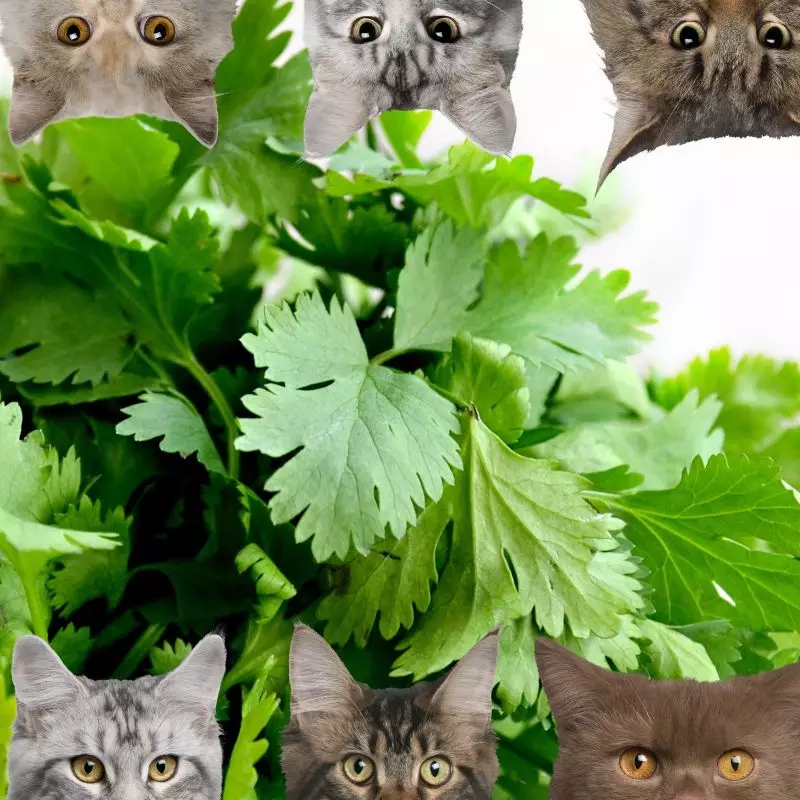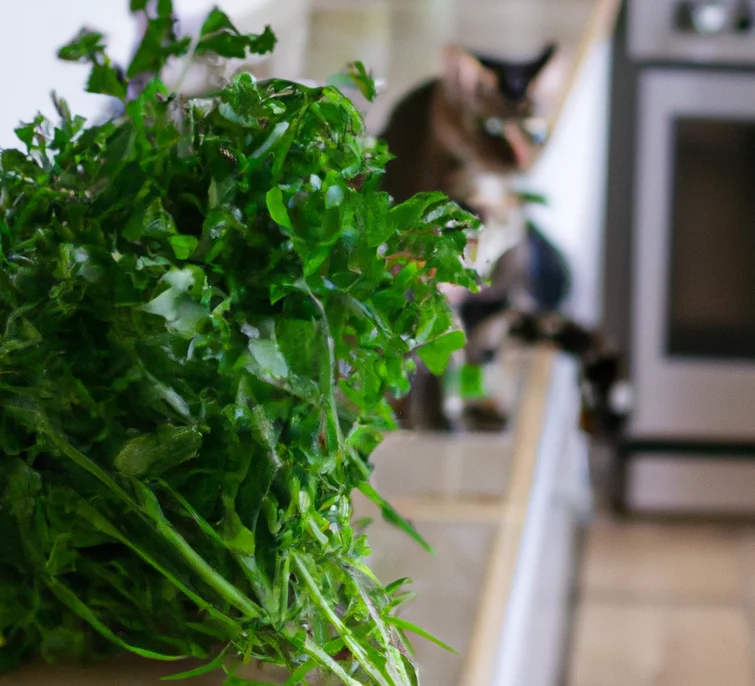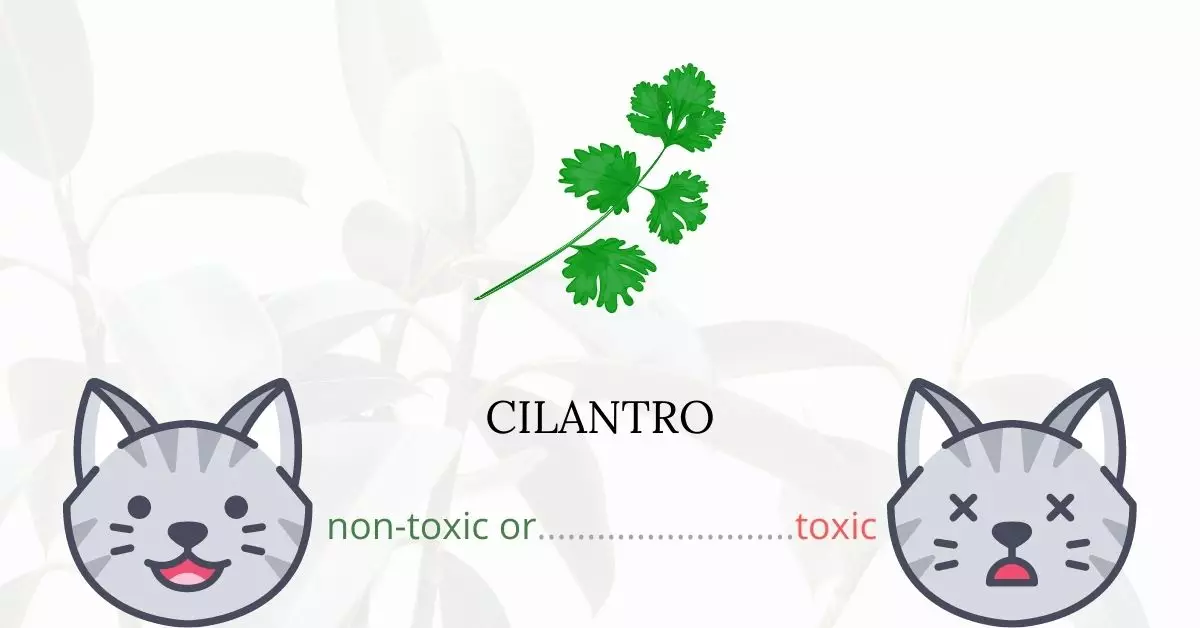Cilantro is not toxic or hazardous for cats.
This article is a result of a collaborative effort with a team of experienced DVMs (doctors of veterinary medicine). Their extensive knowledge and experience have contributed significantly to ensuring the accuracy and relevance of the information provided here, specifically on the potential risks associated with cilantro and its effects on cats. In addition to our collaboration with these experts, we have also rigorously researched high-authority websites such as ASPCA and PetMD to verify the safety of various plants for our feline friends.
It’s worth noting that raw coriander leaves (commonly known as cilantro) contain essential nutrients like carbohydrates, proteins, lipids, vitamins A, B1, B2, B3, B5, B6, B9, C, E, K, and minerals such as calcium, iron, manganese, magnesium, phosphorus, zinc, salt, and potassium. However, the nutritional content is more of relevance to humans than to cats.
Can Cats Eat Cilantro?

Feeding your cat with a small quantity of cilantro will not do any harm. But keep in mind that these pets are severe carnivores who struggle to digest plant matter. As a result, they will not fully utilize the nutrients from these herbs. There is no reason for your cat to eat this on a regular basis.
If you insist on feeding coriander to your cats, combine a small amount with nutritionally balanced commercial cat food. It’s not a good idea to use treats as a substitute for a regular cat’s regular diet.
This plant may appeal to some cats, while others may not. Do not force them to consume it, especially if it is raw, as they may dislike the flavor and smell. Catnip crumbles, tuna, chewy bars, cat delights, and other finer goodies are available for your feline companion.
Finally, keep in mind that too much Coriandrum sativum might induce stomach irritation, gas, diarrhea, and vomiting. Additionally, this culinary herb may cause allergic reactions in some cats.
What is Cilantro?

Cilantro is known for its other names such as Chinese parsley and Mexican parsley.It is a herb that belongs to the Parsely Family, it herb is made from the coriander plant’s fresh leaves (Coriandrum sativum). The leaves and seeds are the most commonly used parts of the plant, while the entire plant is edible. Cilantro usually refers to the plant’s leaves, which can be used fresh or dried. The term “coriander” mainly refers to the plant’s seeds, which are crushed and used as a spice. These terms, however, are frequently used interchangeably. Both of them are used in traditional medicine.
Cilantro is native to the Mediterranean region, Northern Africa, and Southwestern Asia. It can be found in some regions in the U.K where it is known as “fresh coriander leaves”.The leaves resemble flat-leaf parsley and the stems are strong and tender. The seeds of this plant are used to make coriander spice, which has a totally distinct flavor from cilantro. The roots of the plant are also edible and used in some dishes.
Keeping Cats Away From Cilantro

Consider cat-proof fencing if you’re looking for a cost-effective way to keep cats out of your garden. Although cat-proof fencing can be costly, it is also extremely effective. It operates by slanting the top of the fencing outwards rather than inwards.
Rather than focusing on how to keep cats out of your garden, consider creating a garden just for them! Catnip and cat grass are two cat-friendly plants to consider cultivating.
Plants to Avoid For Your Cats
If you are a cat owner and unsure if the plants growing in your yard are harmful to your cats, check out this list of toxic plants for cats. You can also check our list of non-toxic plants for cats.





